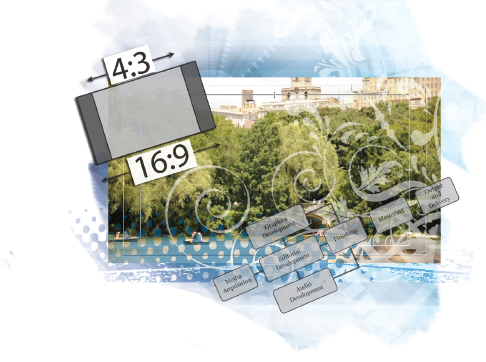Lesson 1

What you'll learn in this lesson:
- To understand the difference between editing and delivery formats
- To understand the difference between high-definition and standard-definition video formats
- To understand the digital post-production workflow
Understanding Digital Video
Before you begin editing in Premiere Pro, it is beneficial to become familiar with some of the concepts and principles that define the art and craft of video editing.
Starting up
You will not need any files for this lesson.
 See Lesson 1 in action!
See Lesson 1 in action!
Use the accompanying video to gain a better understanding of some of the concepts covered in this lesson. The video tutorial for this lesson can be found on the included DVD.
Understanding digital Non-Linear Editing
When you watch a video or film, what you are actually watching is a series of still images displayed sequentially at a high rate of speed. Each image, called a frame, is displayed on screen for a very short period of time (anywhere between 1/24th to 1/30th of a second), creating the illusion of continuous motion. In the past, the only way to edit film or video was using a linear system. That is, an editor had to advance a film reel or tape to a specific part and cut or copy from that point forward. If she or he then wanted to edit another part ...
Get Premiere Pro CC Digital Classroom now with the O’Reilly learning platform.
O’Reilly members experience books, live events, courses curated by job role, and more from O’Reilly and nearly 200 top publishers.

